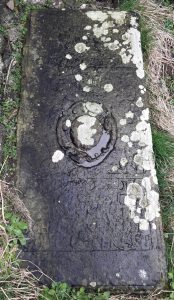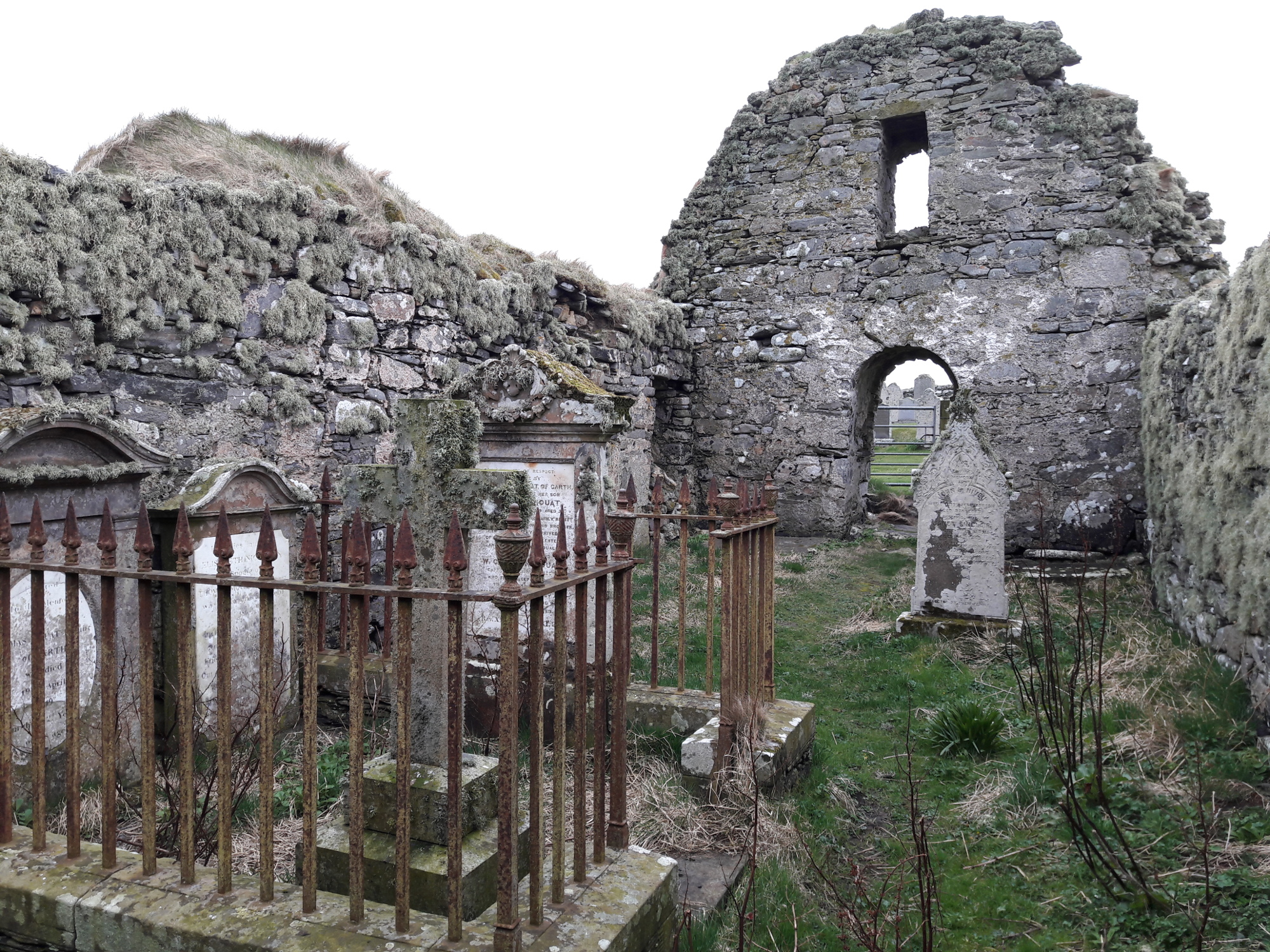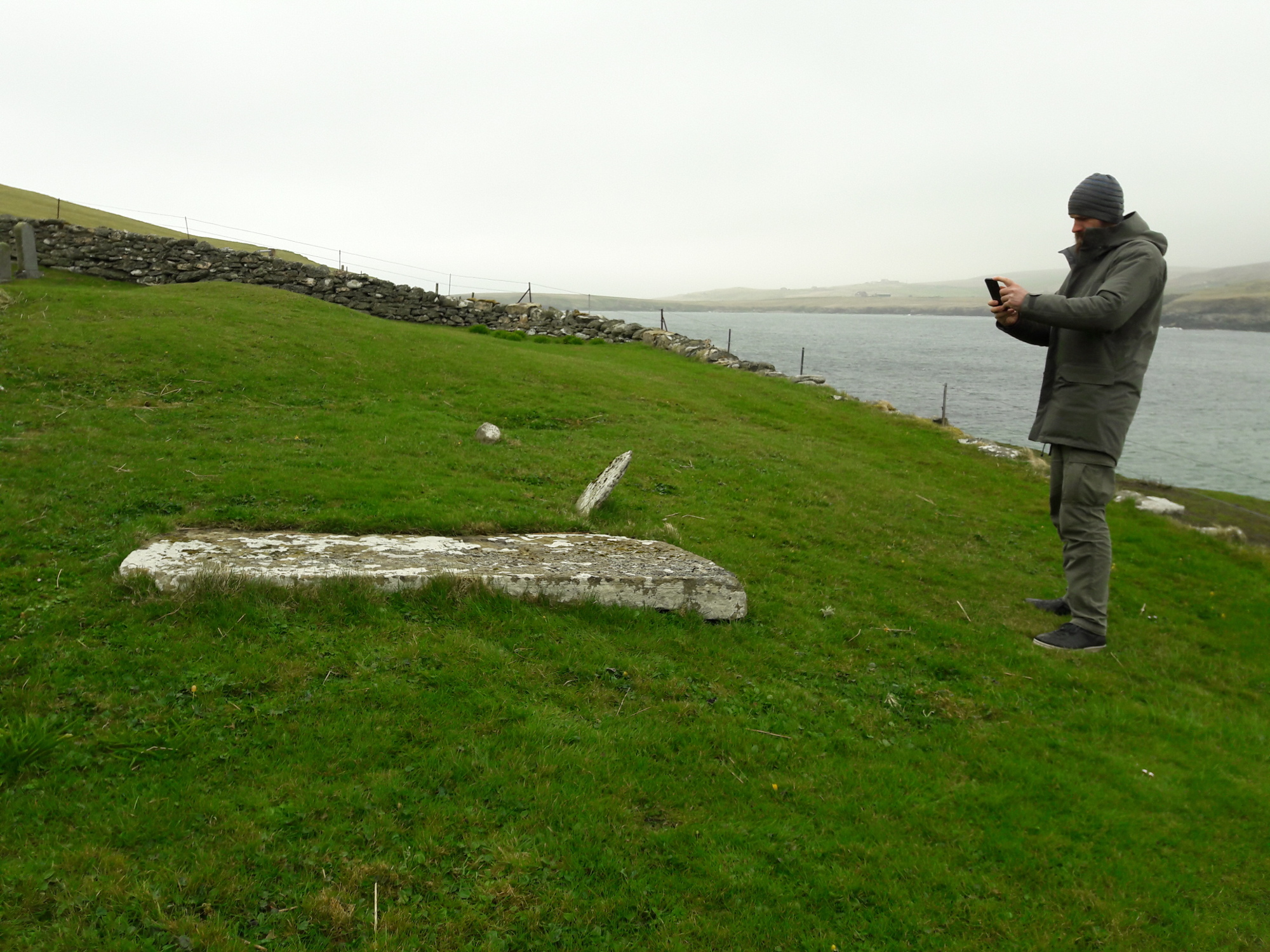Till death do us part: Graves of sixteenth-century German merchants in the North Atlantic
Bart Holterman, 11 October 2018
When one has the chance to visit the northernmost island of Shetland, Unst, it is worth visiting the ruined church at Lunda Wick, in a bay to the Southwest of the isle. To get there, one has to take a small gravel road across a barren moory landscape where nothing seems to live but sheep and the occasional marsh bird. At the end of the path, one reaches a secluded bay where the grey waves and the rain torture the sands of the beach, and out of the fog a ruined medieval chapel appears with a graveyard around it. Inside the roofless chapel are a number of old tomb stones, the text made almost illegible by the lichen that overgrows them and centuries of rain and salty sea wind. In a corner lies a grave slab, on which it is possible to discern a text written in Low German, with great difficulty: “Here lies the honourable Segebad Detken, citizen and merchant from Bremen, who has traded in this country for 52 years, and died [in the year 1573], the 20th of August. God have mercy on his soul” (see below for the Low German text).
Segebad Detken is known from written sources about the Bremen trade with Shetland. He can be tracked from 1557 onwards as a skipper in the northern harbours Burravoe in Yell, and Baltasound and Uyeasound in Unst. In 1566, he was robbed by Scottish pirates in the harbour of Uyeasound. As his tomb slab mentions that he had been trading for 52 years in Shetland, he must have died in the late 16th century (see below). After his death, his relatives took over the business: among others his son Herman and grandson Magnus are recorded as merchants in northern Shetland in the early 17th century.

The grave slab of Segebad Detken in the ruined church in Lunda Wick. Photograph: Bart Holterman, 2018.
Given the long careers of German traders in the North Atlantic, and the fact that Bremen and Hamburg merchants dominated this trade for over 100 years (for Shetland even longer), it is not surprising that some of these merchants were buried on the islands when they died there. We can find another example just a bit outside the same church. There is another grave of a contemporary of Segebad Detken, that of his fellow citizen Hinrick Segelken. The Low German text on his slab translates as: “In the year 1585, the 25th of July, on St James’ day, the honourable and noble Hinrick Segelcken the Elder from Germany and citizen of the city of Bremen, died here in God our Lord, who has mercy on him.”
The tombstones were most probably imported by the German merchants, as the sandstone from which they were made is not available on the islands. By erecting a distinct grave marker for their deceased colleagues, they did not only honour their remembrance, but it also served to strengthen their ties with the local communities. The material and textual aspects of the monuments reminded the observer of the importance of the German merchants for the local economy, even across the boundaries of life and death.
A similar situation we find on Iceland, where we can also find tombstones of German merchants. The National Museum of Iceland in Reykjavik, for example, houses the tomb slab of Bremen merchant Claus Lude (follow link for an image), who was originally buried in the monastery Helgafell on the Snæfellsnes peninsula. The stone shows his house mark, a seal with two crossed stockfishes, and a text which mentions that he died on 3 June 1585. Lude is known to have been active in harbours in Snæfellsnes in the 1550s, and held a license for the harbour Grindavík in 1571.
In southern Iceland, at the graveyard of the former monastery Þykkvabær, one can still find the tombstone of Hans Berman the Younger from Hamburg, who died in 1583. The monastery records reveal that he was administrator of the monastic property (klausturhaldari) and was killed by the parish priest of Mýrar. His name also appears in the register of the Confraternity of St Anne of the Iceland merchants in Hamburg, where another Hans Berman (probably his father) was elderman around the same time.
In Hafnarfjörður near Reykjavík, the Hamburg merchants had their headquarters and also erected their own church. It is likely that they also had a graveyard where they buried their dead. During construction of the modern harbour of Hafnarfjörður in the 1940s, human bones were found which many believed to be from the old German graveyard in the town. It might even be possible that these bones once belonged to Hamburg merchant Hans Hambrock, the only death of a Hamburg merchant in Hafnarfjörður known from the written record. Hambrock had died from the injuries inflicted upon him by his colleague Hinrick Ratken, who drew his knife against him after Hambrock had hit Ratken on the head during a conflict about the unloading of a ship in 1599. Regrettably, the remains of the German church in Hafnarfjörður are now buried below the modern town.
Inscriptions on the discussed tombstones
Lunda Wick, Shetland
Segebad Detken: “HIR LIGHT DER EHRSAME / SEGEBAD DETKEN BVRGER / VND KAUFFHANDELER ZU / BREMEN [HE] HETT IN DISEN / LANDE SINE HANDELING / GEBRUCKET 52 IAHR / IST [ANNO 1573] DEN / 20 AUGUSTI SELIGHT / IN UNSEN HERN ENT / SCHLAPEN DER SEELE GODT GNEDIGH IST.”
Hinrick Segelcken: “ANNO 1585 DEN 25 IULII / UP S. JACOBI IS DE EHRBARE / UND VORNEHME HINRICK / SEGELCKEN DE OLDER UTH / DUDESCHLANT UND BORGER / DER STADT BREMEN ALHIR / IN GODT DEM HERN ENTSCHL / APN DEM GODT GNEDICH IS.”
Helgafell, Iceland
Clawes Lude: “Anno 1585 de.3. Junius starff clawes lüde van Bremen der olde. Dem godt gnedich seij.”
Þykkvabær, Iceland
Hans Berman: “HIR LICHT BEGRAVEN SALICH HANS BIRMA[N] D:I:V:H [i.e. “De Junger van Hamborg”] ANNO 1583.”
Further reading
Hofmeister, Adolf E. Sorgen eines Bremer Shetlandfahrers: Das Testament des Cordt Folkers von 1543. Bremisches Jahrbuch 94 (2015): 46–57.
Holterman, Bart. The Fish Lands. German Trade with Iceland, Shetland and the Faroes in the Late 15th and 16th Century. PhD thesis, Universität Hamburg, 2018.
Koch, Friederike Christiane. Das Grab des Hamburger Hansekaufmanns Hans Berman/Birman in Þykkvibær/Südisland. Island. Zeitschrift der Deutsch-Isländischen Gesellschaft e.V. Köln und der Gesellschaft der Freunde Islands e.V. Hamburg 5.2 (1999): 45.
MacDonald, George. More Shetland Tombstones. Proceedings of the Society of Antiquaries of Scotland 69 (1934): 27–48.


Comments
What research do you have to support your conclusion that the sandstone grave slabs of the Bremen merchants was not available in Shetland?
Thank you for your question. Whether the sandstone used for the gravestones stems from Shetland or not requires scientific investigations. It also needs to be investigated whether a Shetland or local mason would inscribe the gravestone with a text in Middle Low German. Any help to answer these questions is most welcome.
This is very interesting! I’m originally from Leer (East Frisia) and currently live on Shetland for a few months. Wanting to find further info re the connection I came across your blog.
I’ll be going to Yell and Unst soon so will make sure to have a look at this. Any further photos etc you’ll need, let me know 😉